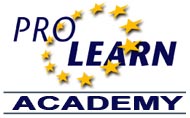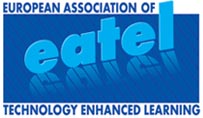Knowledge Management & E-Learning: An International Journal
http://www.serialspublications.com/journals1.asp?jid=184&jtype;=1
The Journal will be published 4 issues per year.
(The inaugural issue will be published on Jan. 2009)
Editor-in-Chief
Maggie M. Wang
The University of Hong Kong, Hong Kong
e-mail: [email protected]
Co-Editor-in-Chief
Stephen J.H. Yang (楊鎮華)
National Central University, Taiwan
e-mail: [email protected]
GUIDELINES:
Knowledge Management & E-Learning: An International Journal (KM⪙) aims to publish latest and quality research articles in the multidisciplinary area of knowledge management and electronic learning. We hope to foster a platform for leading research in the emerging new landscape of knowledge intensive economy, which requires the integration of knowledge and learning.
Possible topics include (but are not limited to):
Knowledge and learning strategies
Knowledge building in e-learning
Knowledge management and action research
E-learning design, usability, and evaluation
E-learning evaluation
Web-based learning and teaching
Strategies for implementing e-learning
E-learning action research
E-learning in the workplace
Web-based training
Electronic performance support systems
Learning and knowledge in social networks
Web-based learning communities building
Computer supported collaborative learning
Knowledge-based learning management systems
Knowledge modeling and visualization
Learning and knowledge portals
IT security and privacy issues
Business process and workflow management
Clinical decision support design and development
Medical informatics
E-healthcare
INSTRUCTIONS:
*1. All articles are published in English. Submission of an article implies that the work has not been published or considered for publication elsewhere.
*2. Names of authors should NOT appear in the text. Attach a separate cover page that includes the title of the paper, title and affiliation of each author with postal and e-mail addresses, and clearly indicate the corresponding author. Biographical notes, approximately 50 words per author, should be placed on the bottom of the cover page.
*3. Title of the paper must be kept within two Lines with a bold 12 fonts in Times Roman.
*4. With each copy, include a single-spaced abstract not exceeding 250 words. The abstract should provide a brief overview of the paper. Abstract should be followed by JEL classification number(s) with up to five Key words.
*5. Manuscripts should not exceed 20 pages with line-spacing of 1.5", including tables, graphs, figures, and references.
*6. Tables, graphs, and figures should appear on separate pages labeled in numerical order with Roman numeral and placed at the end of the text. Label tables at the top and follow the heading with title of the table. Label graphs and figures in similar fashion. Indicate their exact places in the text.
*7. Place references in an unnumbered, alphabetical order at the end of the text. References should be made only if they are cited in the text; and to works that are published, accepted for publication, or available through libraries or institutions.
*8. Cite references in the text by citing the authors’ names and the year of publication in parentheses. Examples of references are as follows:
Journal
Bernanke, B. S, and A. S. Blinder (1988), Credit, Money and Aggregate Demand, American Economic Review, Vol.78, No.2. pp. 435-39.
Book
Greene, W. H. (1993), Econometric Analysis: New York: Macmillan.
Conference
Slow, R., Lunn, S., and Slatter, P. (1986), How to identify business applications of expert systems, Proceedings of the Second International Expert Systems Conference pp. 327-338, London.
*9. Electronic submissions via email are required. Prospective authors of accepted articles must provide electronic version of the accepted articles in MS Word.
For questions and manuscript submissions, please contact the EIC:
Dr. Maggie M. Wang ([email protected])
Dr. Stephen J.H. Yang ([email protected])





